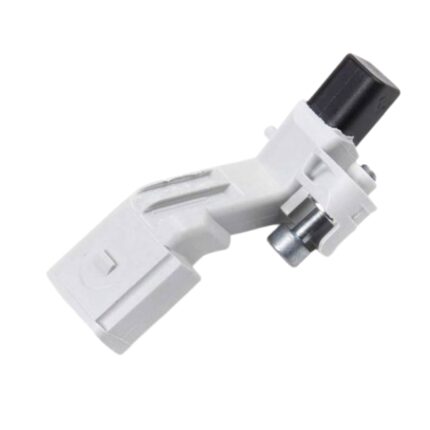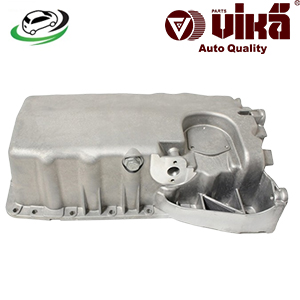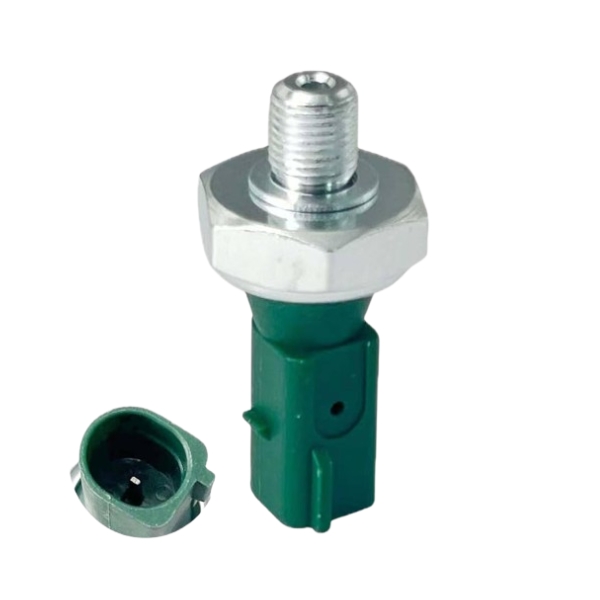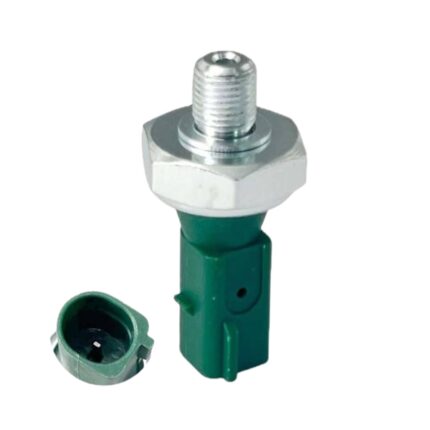Get VW Bora I (1J2) Oil Pressure Switch 036919081A in Kenya
The oil pressure switch, also known as the oil pressure sensor or oil pressure sender, is a critical component in an internal combustion engine. Its primary function is to monitor the engine’s oil pressure and alert the driver if the pressure falls below a safe level. Proper lubrication is essential for the smooth operation and longevity of an engine, as it reduces friction between moving parts and prevents wear and overheating. In this comprehensive guide, we will explore the purpose, construction, operation, importance, common issues, diagnostics, and maintenance of the oil pressure switch.
Purpose of the Oil Pressure Switch
Monitoring Engine Oil Pressure
- Pressure Detection: The oil pressure switch monitors the pressure of the engine oil circulating through the engine. It is designed to sense whether the oil pressure is within the recommended range, which is crucial for the engine’s health.
- Alert System: If the oil pressure drops below a predetermined threshold, the oil pressure switch triggers a warning light on the dashboard, typically depicted as an oil can icon. This alert is crucial, as low oil pressure can lead to insufficient lubrication, causing engine damage or even catastrophic failure.
Safety Mechanism
- Engine Protection: By alerting the driver to low oil pressure, the oil pressure switch helps prevent severe engine damage. Low oil pressure can result from a variety of issues, including oil leaks, a failing oil pump, or an insufficient oil level. Immediate attention to the warning can prevent costly repairs or engine replacement.
- Automatic Shutdown (in some vehicles): In certain vehicles, the oil pressure switch is integrated into the engine management system and can initiate an automatic engine shutdown if the oil pressure drops too low. This feature is designed to protect the engine from operating without adequate lubrication.
Construction of the Oil Pressure Switch
Key Components
- Housing:
- The housing of the oil pressure switch encases the internal components and is typically made from metal or durable plastic. It is designed to withstand high temperatures and pressure within the engine.
- Pressure Sensing Element:
- Inside the housing, the pressure-sensing element detects changes in oil pressure. This element is usually a diaphragm or a bellows mechanism that moves in response to the pressure of the oil. The movement of this element actuates an electrical contact, which either opens or closes the circuit.
- Electrical Contacts:
- The switch contains electrical contacts that connect or disconnect the circuit based on the oil pressure. When the pressure is within the normal range, the contacts are either open or closed (depending on the switch type). If the pressure falls below the set threshold, the contacts change state, sending a signal to the vehicle’s dashboard.
- Threaded Connector:
- The oil pressure switch is typically installed in an oil passage on the engine block using a threaded connector. The threads must provide a secure, leak-proof connection to prevent oil leaks.
- Wiring Connector:
- The switch includes a wiring connector that links it to the vehicle’s electrical system. This connector transmits the signal from the switch to the oil pressure warning light or gauge on the dashboard.
Types of Oil Pressure Switches
- Single-Function Switches:
- Function: These are the most common type of oil pressure switches. They have a simple on/off function, where the electrical contact closes when oil pressure drops below a certain level, illuminating the warning light on the dashboard.
- Application: Commonly used in vehicles where the oil pressure warning light serves as the primary indicator of low oil pressure.
- Dual-Function Switches:
- Function: These switches have two electrical circuits, one for the oil pressure warning light and another for an oil pressure gauge. This allows the driver to see a precise reading of the oil pressure in addition to the warning light.
- Application: Found in vehicles with both an oil pressure gauge and a warning light.
- Variable Resistor Sensors:
- Function: Instead of a simple on/off function, these sensors provide a variable resistance signal proportional to the oil pressure. The ECU or a dedicated gauge interprets this signal to display real-time oil pressure levels on the dashboard.
- Application: Common in modern vehicles where precise monitoring of oil pressure is necessary.
Operation of the Oil Pressure Switch
How It Works
- Normal Oil Pressure:
- When the engine is running, the oil pump circulates oil through the engine, creating pressure within the system. The oil pressure switch monitors this pressure. Under normal conditions, the pressure is sufficient to keep the switch in its default state (either open or closed, depending on the design), and the warning light remains off.
- Low Oil Pressure:
- If the oil pressure drops below the switch’s set threshold, the pressure-sensing element inside the switch moves, causing the electrical contacts to change state. This action either closes or opens the circuit, depending on the switch type, and triggers the oil pressure warning light on the dashboard.
- Restoring Oil Pressure:
- If the oil pressure returns to a safe level, the pressure-sensing element returns to its original position, restoring the circuit to its normal state and turning off the warning light.
Interaction with Other Systems
- Engine Control Unit (ECU):
- In modern vehicles, the oil pressure switch may send signals directly to the ECU, which can then trigger various responses, such as adjusting engine operation to protect the engine or logging a fault code for diagnostic purposes.
- Dashboard Display:
- The oil pressure switch’s signal is typically connected to a dashboard warning light. In vehicles with more advanced systems, it may also interact with an oil pressure gauge or a digital display that shows the exact pressure.
Importance of the Oil Pressure Switch
Engine Longevity
- Preventing Wear and Tear:
- Adequate oil pressure ensures that all moving parts within the engine are properly lubricated. The oil pressure switch plays a vital role in monitoring this pressure and alerting the driver to any issues that could lead to increased friction, overheating, and wear.
- Avoiding Catastrophic Failure:
- A sudden drop in oil pressure, if unaddressed, can lead to severe engine damage or even complete failure. The oil pressure switch provides an early warning system, giving the driver the opportunity to stop the engine and prevent further damage.
Fuel Efficiency and Emissions
- Efficient Operation:
- Engines that operate with proper lubrication are more efficient, as there is less friction between moving parts. This efficiency translates into better fuel economy and reduced emissions, both of which are important for environmental protection.
- Compliance with Regulations:
- Vehicles equipped with functioning oil pressure switches are more likely to meet emissions standards, as proper lubrication helps ensure that the engine operates within its designed parameters, minimizing harmful emissions.
Diagnostic Aid
- Troubleshooting:
- The oil pressure switch is a key diagnostic tool. If the warning light illuminates, it provides a starting point for diagnosing potential issues with the oil pump, oil level, or engine bearings.
- Maintenance Alerts:
- In some vehicles, the oil pressure switch may also trigger maintenance alerts, reminding the driver to check the oil level, replace the oil filter, or perform other related maintenance tasks.
Common Issues with Oil Pressure Switches
Symptoms of a Faulty Oil Pressure Switch
- False Warnings:
- A common symptom of a failing oil pressure switch is the oil pressure warning light coming on when there is no actual drop in oil pressure. This can be caused by a malfunctioning switch that sends incorrect signals to the dashboard.
- No Warning Light:
- Conversely, a faulty switch may fail to trigger the warning light when oil pressure is low. This is particularly dangerous as it leaves the engine vulnerable to damage without any indication of a problem.
- Oil Leaks:
- Over time, the seal around the oil pressure switch may degrade, leading to oil leaks. This not only reduces the engine’s oil level but can also lead to inaccurate pressure readings.
- Erratic Oil Pressure Readings:
- In vehicles equipped with an oil pressure gauge, a failing switch or sensor can cause erratic readings, making it difficult to determine the actual oil pressure.
Causes of Oil Pressure Switch Failure
- Wear and Tear:
- Like any mechanical or electrical component, the oil pressure switch can wear out over time due to continuous exposure to high temperatures, pressure, and engine vibrations.
- Contamination:
- Oil contamination, such as sludge or debris, can clog the sensing element or interfere with the switch’s electrical contacts, leading to malfunction.
- Electrical Issues:
- Corroded or damaged wiring, poor connections, or short circuits can cause the oil pressure switch to fail or send incorrect signals.
- Mechanical Damage:
- The switch can be physically damaged by impacts during engine repairs or if it is improperly installed or removed.
Diagnostics and Maintenance
Diagnosing a Faulty Oil Pressure Switch
- Visual Inspection:
- Check the oil pressure switch and surrounding area for signs of oil leaks or physical damage. Inspect the wiring and connectors for corrosion, loose connections, or fraying.
- Oil Pressure Test:
- Use a mechanical oil pressure gauge to measure the actual oil pressure in the engine. Compare this reading with the oil pressure warning light or gauge reading to determine if the switch is functioning correctly.
- Electrical Testing:
- Use a multimeter to test the continuity of the oil pressure switch. With the engine off, the switch should show continuity (closed circuit) if it is a normally closed switch. Start the engine and observe if the switch opens the circuit at the appropriate pressure.
Follow us on Facebook for more parts.




